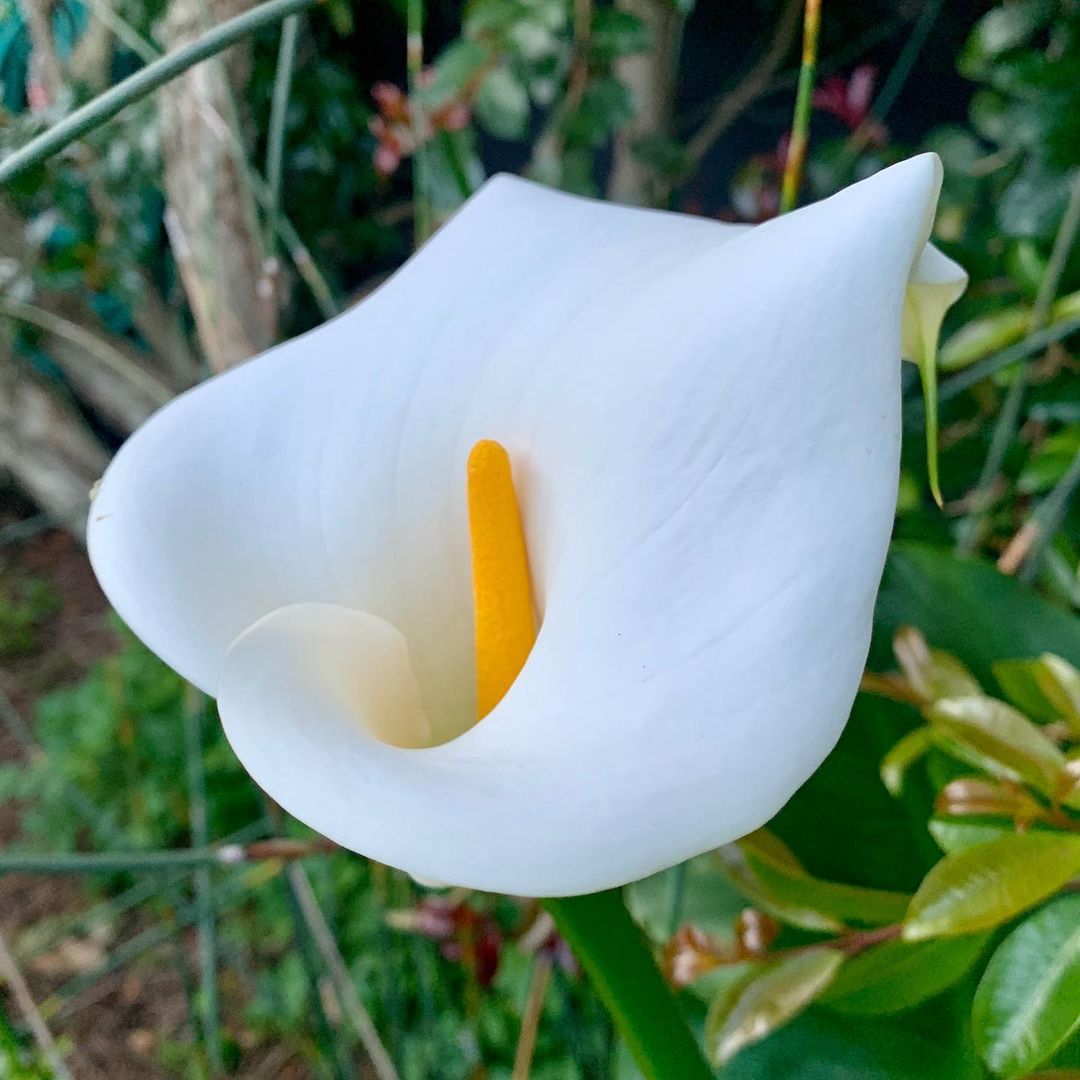The arum lily is loved for its big and beautiful white flowers, which are really popular in the flower industry.
Grow arum lily flowers in your garden for an amazing display of gorgeous colors. These lovely blooms are often used to make pretty flower arrangements and bouquets.
Common Names: Arum Lily, Calla Lily, Pig Lily, Trumpet Lily, White Arum, Garden Calla, Florist’s Calla
Botanical Name: Zantedeschia
USDA Zones: 8-11
Read: Red Spider Lily Growing Tips
Arum Lily Plant Information

Arum Lilies are native to South Africa; they feature a tall and upright stem that carries a funnel-shaped spathe covering a vibrant yellow or orange spadix. These striking plants display an array of colors, including white, orange, yellow, pink, and dark purple, during the summer to early fall period.
Also known as Calla lilies, they are not true lilies despite their common name. They are a type of rhizomatous herbaceous perennial plant belonging to the Araceae family.
The arum lily flower looks really elegant and catches people’s eyes because it is so attractive.
Fact: The genus name Zantedeschia honors Italian botanist Giovanni Zantedeschi (1773-1846), and the species name, aethiopica, refers to its origins in South Africa.
Arum Lily Propagation
The most straightforward and efficient method of propagating Arum Lily involves dividing its rhizomes or plant bulbs. Alternatively, you can grow it from seeds, although this approach can be more time-consuming.
To propagate Arum Lily, remove the plant from its pot or garden. Gently clean the soil around the roots to get a clear view of the bulbs. Using a sharp knife, divide the clumps, ensuring that each division retains a portion of the root. Fill an 10-12 inches deep pot with fertile and well-loose soil. Take the divided rhizomes and sow them at a depth of 4-6 inches, covering them with a thin layer of the potting mix.
It is recommended to plant one rhizome per pot, as Arum Lily plants tend to spread their leaves widely.
When planting the rhizomes, position them with the flat surface facing downwards and the pointed end facing upwards, as this is where the new shoot will emerge.
Ensure the pot is placed in a location that receives ample bright sunlight. After planting, water the rhizomes thoroughly and maintain consistent moisture in the soil. Within 2-3 weeks of planting, you should start to see new shoots emerging from the rhizomes.
TIP: For optimal results, it is advisable to divide the rhizomes of Arum Lily during late fall, allowing them ample time to heal before the arrival of their growing season in spring.
Ideal Growing Conditions for Arum Lily

Sunlight
Select a sunny location for the arum lily, taking care to avoid excessive heat exposure. In contrast, the plant benefits from bright light, so prolonged exposure to intense sunlight should be avoided. Ideally, choose a spot that receives bright, indirect light for optimal growth.
Additionally, you can grow the arum lily near a pond or stream, as it has the unique ability to thrive as a semi-aquatic plant. In such cases, it can be directly planted into the water, further enhancing its natural habitat.
Note: It is also important to protect the arum lily from cold drafts and strong winds, as it is sensitive to these conditions.
Soil
For optimal growth, the arum lily prefers soil that is evenly moist and well-draining, with a good amount of organic matter. To achieve this, amend the soil with a humus-rich fertilizer and incorporate a handful of perlite.
This combination helps to improve both the nutrient content and drainage capacity of the soil, creating a favorable environment for the arum lily to thrive.
Water
Arum lilies flourish when grown near the edge of a pond, highlighting their high water requirements. It is important to water the Arum Lily thoroughly and consistently. However, during its winter dormancy period, it is crucial to refrain from wetting the plant.
Temperature & Humidity
Arum lily favors warmer temperatures, preferably within the range of 60-80°F (16-27°C). When exposed to temperatures below 50°F (10°C), the plant will enter a period of dormancy.
In addition, Arum lilies thrive in humid climates. If the weather is dry, it is beneficial to have a humidifier available to help maintain adequate humidity levels.
Read: Passiflora Caerulea Growing Guide
Arum Lily Care
Fertilizer
Arum lilies have high nutrient requirements and benefit from regular fertilization. To promote a stunning display of flowers, feed the plant with an all-purpose liquid fertilizer every month throughout the growing season.
Alternatively, organic fertilizers such as cow dung compost, bone meal, and fish emulsion can also be used to enhance plant growth. However, avoid fertilization during the plant’s dormant periods.
Mulching
To provide protection from the cold, mulch the base of Arum lilies with organic matter like hay, birch chips, or dry leaves. This mulching layer acts as insulation, safeguarding the plant from the effects of low temperatures.
Pruning
Pruning is generally not essential for Arum lily plants, but if the plants appear untidy or large, you can trim them for aesthetic purposes.
Additionally, if any leaves have turned black due to winter frost damage, it is advisable to cut them off to maintain the plant’s overall appearance.
Overwintering
Caring for Arum lilies during winter is simple in mild winter climates (USDA Zones 8-11). However, in cooler zones, it is necessary to protect the bulbs from frost. To do this, carefully dig up the bulbs before the onset of frost and allow them to dry in the sun for a few days.
To ensure their survival, you can move the potted Arum lily indoors or into a greenhouse. Maintain the temperature around 50°F (10°C) in that area. During this time, reduce the frequency of watering to prevent overwatering.
Pests and Diseases
Arum lilies are susceptible to fungal diseases such as root rot or collar rot, as well as various pests, including aphids, mites, and mealybugs. To combat these issues, apply a monthly treatment of insecticidal soap solution, which helps control and eliminate the pests effectively.
Read: Tievine Care and Growing Information
Toxicity
According to the American Society for the Prevention of Cruelty to Animals (ASPCA), Calla Lily is toxic to dogs and cats. Also, ensure that Arum Lily is kept out of the reach of children at all times. This plant contains insoluble calcium oxalates, which can cause irritation and burning of the mouth.
Additionally, exercise caution when handling the plant’s sap during cutting or pruning, as it can cause severe irritation due to its highly irritant nature.



